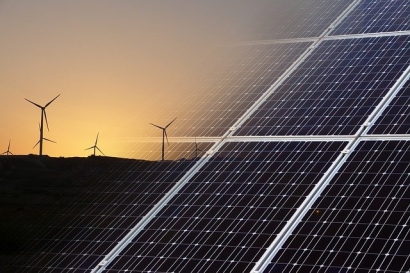
Business owners plan to shrink their carbon footprints by shifting their power sources away from fossil fuels. They are adopting renewable energy supplies to maintain production rates without adversely affecting the environment. Various clean energy sources play a vital role in helping companies achieve net zero emissions.
While some businesses are taking the initiative to improve their sustainability efforts, others struggle to manage their pollution production rates. Researchers discovered that 100 companies produce nearly 71% of global greenhouse gas emissions. A significant quantity of the pollution derives from the “dirty” energy powering manufacturing facilities, packaging processes and distribution vehicles.
Apple is one company struggling to manage its carbon emissions. Producing laptops, smartphones and tablets use large amounts of electricity and natural resources. When the emissions pollute the atmosphere, they interfere with its temperature control abilities.
Companies like Apple are targeting their high emission rates by sourcing clean energy for global manufacturing. They are also using recycled materials to minimize transportation pollution and the adverse effects of mining. Energy professionals are responding to businesses’ new sustainability goals to help them achieve net-zero emissions.
When companies establish net-zero emission goals, they require building and system upgrades. Energy professionals can provide individuals with emission-free power sources by installing rooftop photovoltaic (PV) solar panels. PV arrays effectively convert solar radiation into a direct current of electricity.
Professionals can ensure the efficiency of panels by pairing them with energy-efficient technology. A company’s manufacturing facility or office spaces may consume high amounts of electricity and place strain on solar systems. Energy workers often pair arrays with smart thermostats and light-emitting diode (LED) technology to meet net-zero emission goals.
Smart thermostats connect to a building’s heating, ventilation and air conditioning (HVAC) system. They use the Internet of Things (IoT) to access local weather predictions in real-time. The technology also uses motion detection sensors to minimize unnecessary energy use in vacant zones.
Energy professionals also install LED bulbs to support renewable energy systems. The lights are about 75% more energy-efficient than incandescent bulbs. They also last nearly 25 times longer than other products on the market.
Some regions have low solar production rates making PV panels inefficient power sources. Business owners can assess the optimal renewable energy sources compatible with their local weather patterns. Many companies utilize wind turbines, hydro and geothermal power supplies to meet their energy needs.
Business owners are transitioning away from fossil fuels towards renewables using financial support from the government. Last year, the United Nations defined the importance of emission-reduction efforts at the Climate Change Conference. Companies assessed the urgency of climate issues and looked to the government for support.
The government responded by establishing tax credits to help fund clean energy projects. When companies purchase and install a wind turbine to meet their energy needs, they become eligible for a 22% credit. Businesses relying on solar power may also receive financial benefits from the government.
After companies install rooftop solar panels, they can access a 26% tax credit. Over time, as business owners pay off their initial system costs, they can access low-cost electricity. Solar panels currently deliver the most affordable energy supply on the market.
The cost-efficiency of renewable energy systems improves their accessibility. With low production costs and government aid, even small businesses can achieve net-zero emissions.
Environmental engineers are advancing renewable technologies to support companies’ net-zero emission goals. Systems like floating PV panels and bladeless wind turbines increase emission-free energy production rates and a business’s access to clean electricity. Staying on top of new renewable technologies can help companies effectively reduce their greenhouse gas emissions.

